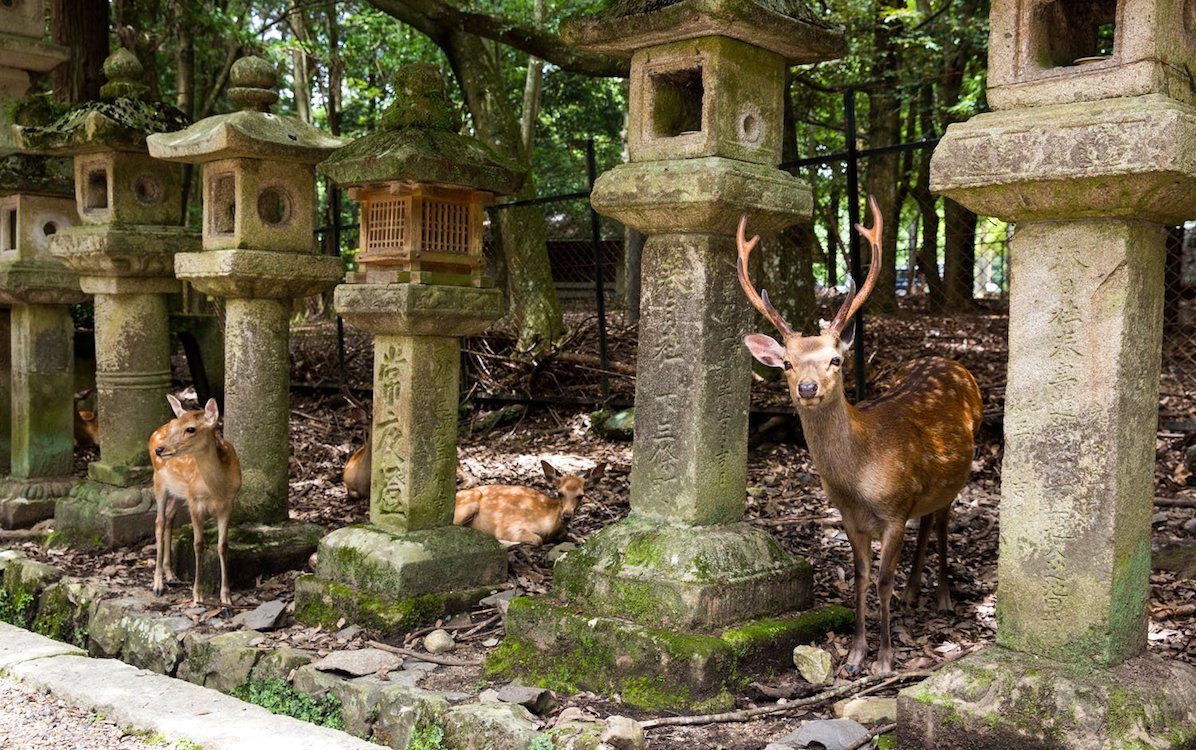
Beginning of organized religion and foreign contacts in Ancient Japan
The continent of Asia, Shinto-Buddhism, and their contribution to the statecraft of Japan
The influence of religion and foreign contacts on the statecraft and national identity of ancient Japan have been analyzed by numerous scholars. Probably the most important ones are Okazaki Takashi, Matsumae Takashi, Sonoda Koyu and Delmer M. Brown. Their contributions have stirred fascinating debates about the circular relationship between material and spiritual elements in history. Did archaic animistic beliefs develop into a national religion thanks to economic prosperity and advanced political strategies, or were economic prosperity and the centralization of an efficient state made possible by the very strong persuasion of pre-existing common spiritual values? Or was the result just a compromise between two complementary phenomena? Do contacts with more developed civilizations encourage the creation of a unique culture or inhibit it because of the imitation?
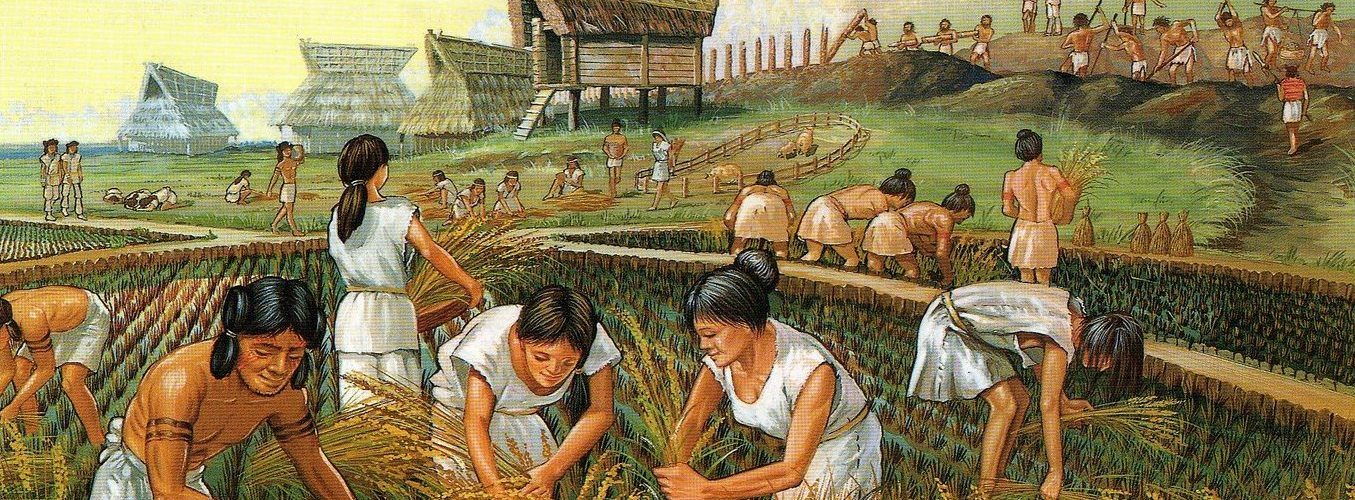
1 of 7
Since the very beginning, the prehistoric culture of the Japanese archipelago was heavily influenced by the continent of Asia. First of all, it’s undeniable that the Incipient Jomon hunter-gatherers arrived in Japan by boat and via land bridges that later disappeared. Second of all, agriculture and iron tools were introduced from China or Korea or both. As in many other ancient societies, the agricultural revolution radically changed the lifestyle of the people. The hunter-gatherers were slowly replaced by a fully sedentary agricultural culture, the Yayoi. In time, the villages grew into tribe federations and from there into small kingdoms.
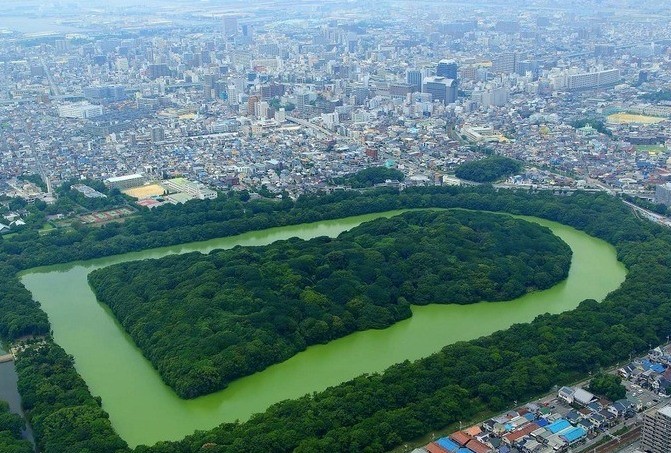
2 of 7
Starting from the Kofun era, Korea was divided into three kingdoms: Koguryo, Silla and Paekche. Those ancient states worked as intermediaries for the cultural, technological and economic transmission from China to Japan. New weapons, military tactics, advanced carpeting techniques and Buddhism were introduced from there. Korea was also the prime source for imports of iron ingots. During the Asuka and Nara periods, Japan grew into a fully fledged civilization based on the model of the Chinese Tang dynasty. Inspired by the economic and cultural successes of the glorious Tang, the Japanese state was centralized under the absolute authority of the emperor, a reign also legitimized by Shinto and Buddhism.

3 of 7
The damnation or the salvation of the soul are abstract ideas completely unknown to Shinto. Heaven and Hell were also much later conceptions introduced by Buddhism. Shintoism is not a religion built around the individual. The individual has no moral responsibility in the face of a powerful god or a sacred ethical guideline. The archaic Jomon could bring misfortune to the community as a whole if he undertook impure actions. He had the duty to participate in magical rites in order to purge all that was filthy. The earliest forms of Shinto offer a plausible explanation for how the general mentality of the Japanese civilization advanced through the centuries and why the current Japanese society is based on a collectivist unifying philosophy.

4 of 7
Foreign contacts also influenced the ancient Japanese perspective. Although Shinto is now an original and unique religion, in its first phases of development countless myths were borrowed from the Asian continent. Actually, Shinto is a rich source of folk tales and legends, later inspiring works of literature of universal value, simply because the founding pillars were based on varied cultural perspectives, carved by contrasting life experiences. Moreover, the later introduction of Buddhism altered the way Shinto was expressed in arts, added new stories to the traditional narrative, offered ethical perspectives and even adapted some of the animistic rituals, transforming them into more formal and complex ceremonies.

5 of 7
Shinto as a state religion was not just a manipulated fraud work of fiction. In order to arrange a compelling force of political legitimization, the ancient scholars tried to choose and be inspired by the most popular and enduring myths from folklore. Even the most enlightened intellectuals of that era were very religious people and their work represented a middle ground between their own mystical beliefs and secular political necessity. By the virtue of this spiritual and material link, Shinto and the ancient Japanese state reached maturity at the same time and were both shaped by each other.
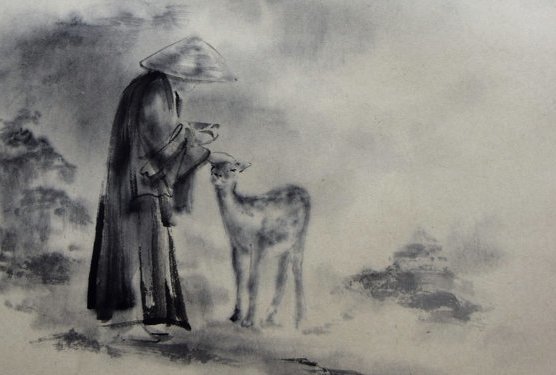
6 of 7
While early Shinto progressed spontaneously from the bottom to the top of the pyramid, Buddhism was, first and foremost, used as a political tool. Initially introduced from Korea, the foreign faith was not well received by the native clans whose authority relied on the worship of traditional deities. The numerous aristocrats originating from Korea and China organized themselves around the Soga clan, promoting Buddhism not as a spiritual teaching, but more as a political ideology. Only after the downfall of the Soga family did the Japanese emperors fully recognize Buddhism as a state religion, investing large sums of money in order to consolidate it. Yet, until the late Nara jidai, with a few enlightened exceptions, most of the Japanese understood the Buddhist dogma in a very shallow way, praying for a plentiful harvest or for good health.

7 of 7
The reasons behind the adoption of Buddhism were numerous. The Yamato kings wanted to be recognized as the equals of Korean and Chinese sovereigns, and a common religion could have facilitated a better diplomatic dialogue. Trade relations were also facilitated by shared spiritual values. Furthermore, the Japanese started to manifest geopolitical ambitions in the Korean Peninsula and they needed allies to accomplish their high goal. It is not by chance that Paekche, Japan’s most reliable ally, was the one who presented this faith to the Yamato rulers. As China was reunified under the Sui and Tang dynasties, the Japanese elite understood that great political and economic reforms could be faster implemented with the help of a new religious ideology.
Most scholars agree that the Yellow River and the Yangtze River in China represent the cradle of civilization in the Far East. The first agricultural society clearly appeared there, with recent research dating it as early as 5,000 BC. According to traditional historiography, Xia was the first Chinese dynasty that emerged in 2,000 BC. The following Shang dynasty was one of the most advanced kingdoms in the world at that time, using bronze weapons and already adopting early Chinese characters in 1,600 BC. The Zhou dynasty entered the Iron Age one thousands years before our era, and the Qin dynasty materialized into the first Chinese empire in 220 BC. It is inevitable that such enormous cultural expansion also had a profound impact on the ancient societies of Korea and Japan.
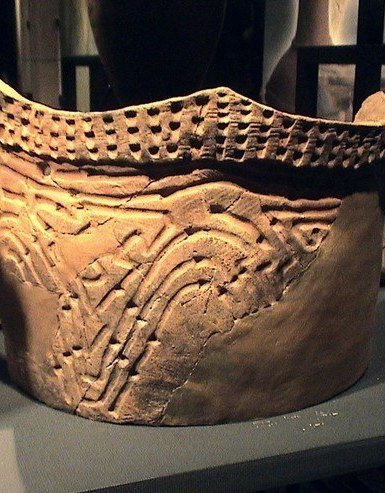
1 of 5
Until recently it was believed that Japan lost all contact with the continent of Asia when the glaciers finally melted in 14,000 BC. Archeological sites point to a scant connection between the Early Jomon of Japan from northern Kyushu and the Jeulmun hunter-gatherers from Korea. Pottery discovered in Busan had similar traits with the Jomon, suggesting that the famous Sobata pottery style of prehistoric Japan was inspired by primitive ceramics from Korea.
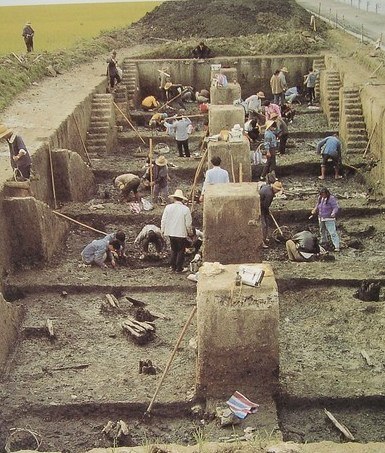
2 of 5
The prehistory of Japan was again marked by numerous migrations in the Late Jomon and Early Yayoi. Plant manipulation already existed but rice cultivation was introduced by those migrations. Although no one denies that agriculture spread from the Yangtze River to Korea and Japan, the exact route and date of arrival is very controverted. Scientists debate around three theories that try to explain the point of origin. All of them are supported by solid evidence and thorough analysis.
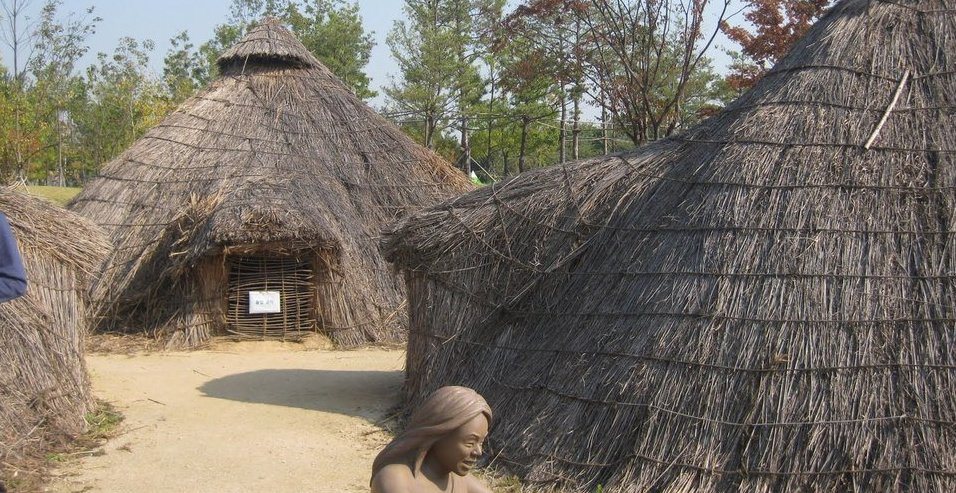
3 of 5
Developed Jomon-style ceramics have been unearthed in various parts of Korea but there is no evidence of pottery from Korea in the Middle and Late Jomon. This could mean that Middle and Late Jomon culture was isolated and developed without any influence, but that it also exported technologies to the Jeulmun culture. The transmission of technology was possible only because the southern part of the Korean Peninsula was very close to Northern Kyushu. Communication was limited only to the tribes from those areas.
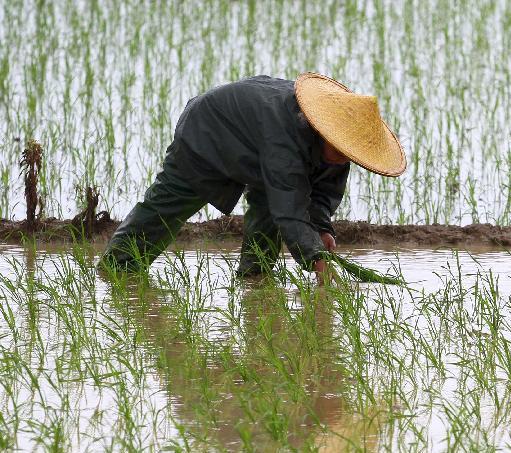
4 of 5
One possible route of migration could have been from China to the Korean Peninsula and then centuries later to the Japanese archipelago. In this scenario, the migrations played a vital role in the rise of the Yayoi. Archaeological artifacts from northern Kyushu support this claim. Another hypothesis states the contemporary adoption of agriculture in Korea and Japan from the Yangtze River, meaning that the cultures of Korea and Japan reached a relatively equal stage of development. Recent rice DNA results and carbon dating reinforce the second theory. An additional possibility is represented by the transmission of rice cultivation from East China to Japan via the Ryukyu islands. Accentuated similarities between Early Yayoi skeletons and the ones from Jiangsu province of China make this idea plausible.
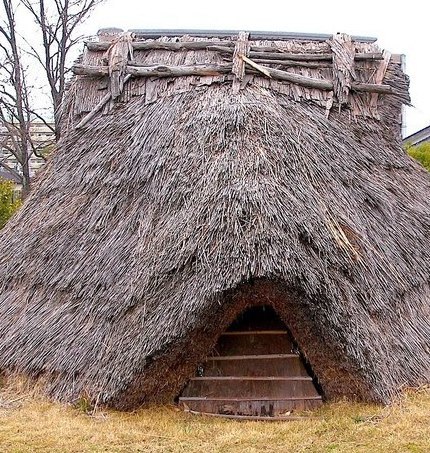
5 of 5
In Okazaki Takashi’s opinion, the most probable ancient route of technology transfer was from China to Korea, and then later to Japan. Recent studies point out that agricultural societies appeared in the Korean Peninsula in 1,000 BC, before the rise of the Yayoi. No Chinese stone and bronze tools have been found from the Early stage of Yayoi. Instead, many Korean tools were similar to the contemporary culture from Japan. Maybe the most important discovery was made at the Itazuke site from northern Kyushu, a village where the Late Jomon hunter-gatherers lived alongside Early Yayoi settlers. Their tools and weapons had similar traits with the ones found in Korea.
- Delmer M. Brown - The Cambridge History of Japan Volume 1, Ancient Japan, Cambridge University Press, Cambridge, 1993
- Curtis Andressen - A short history of Japan from Samurai to Sony, Allen and Unwin, Canberra, 2002
- W. G. Beasley - The Japanese Experience. A short history of Japan, The Orion publishing group, London, 1999
- Kenneth Henshall - A history of Japan from Stone Age to Superpower, Palgrave Macmillan, New Zealand, 2012
- Donald Denoon, Mark Hudson, Gavan McCormack, Tessa Morris-Suzuki - Multicultural Japan: Palaeolithic to Postmodern, Cambridge University Press, New York, 2001
- W. Scott Morton, J. Kenneth Olenik, Charlton Lewis - Japan Its History and Culture: 4th Edition, McGraw-Hill Publishing, New York, 2005
- Patricia Buckley Ebrey, Anne Walthall, James Palais - East Asia. A Cultural, Social, and Political History, Houghton Mifflin Publishing, New York, 2009
- George Sansom - A History of Japan to 1334, Charles E. Tuttle Publishing, Tokyo, 1958
- Karl F. Friday - Japan Emerging: Premodern History to 1850, Westview Press, Colorado, 2012
- R.H.P. Mason & J.G. Caiger - A History of Japan Revised Edition, Tuttle Publishing, Singapore, 1997
- P. C. Swann- The Art of Japan From the Jomon to the Tokugawa Period, Greystone Press, New York, 1966
- Noritake Tsuda - A history of Japanese Art. From Prehistory to the Taisho Period, Tuttle Publishing, Tokyo, 2009
- Penelope Mason - History of Japanese Art. Second Edition, Pearson Prentice Hall, New Jersey, 2005
- Donald Keene - Seeds in the Heart. Japanese Literature from Earliest Times to the Late Sixteenth Century, Henry Holt and Company Publishing, New York, 1993
- John Dougill - Japan’s World Heritage Sites. Unique Culture, Unique Nature, Tuttle Publishing, Tokyo, 2014
- William Wayne Farris - Japan to 1600: A Social and Economic History, University of Hawaii Press, Honolulu, 2009
- William Wayne Farris - Sacred Texts and Buried Treasures Issues in the Historical Archaeology of Ancient Japan, University of Hawaii Press, Honolulu, 1998
- Gina Lee Barnes - China, Korea and Japan The Rise of Civilization in East Asia, Thames and Hudson, New York, 1993
- Gina Lee Barnes - State formation in Japan. Emergence of a 4th-century ruling elite, Routledge, London, 2007
- Gina Lee Barnes - A Hypothesis for Early Kofun Rulership, Japan review 27, 2014, pp. 3-29
- Wontack Hong - Yayoi Wave, Kofun Wave, and Timing: The Formation of the Japanese People and Japanese Language, Korean Studies Vol. 29, 2005, pp. 1-29
- Mark Hudson - Rice, Bronze, and Chieftains: An Archaeology of Yayoi Ritual, Japanese Journal of Religious Studies, 1992, pp. 139-189
- Naofumi Kishimoto - Dual Kingship in the Kofun Period as Seen from the Keyhole Tombs, Urban Scope publication, vol. 4, 2013, pp. 1-21
- Allan G. Grapard - Shrines Registered in Ancient Japanese Law. Shinto or not?, Japanese Journal of Religious Studies, vol. 29, 2002, pp. 209-232
- Shigefuji Teruyuki - International exchange of Kofun period chieftains of Munakata Region and Okinoshima rituals, Saga University, Faculty of Culture and Education, pp. 89-136
- Koichi Yokoyama - Early Historic Archaeology in Japan, Nara National Cultural Properties Research Institute, 1976, pp. 27-41
- Jean-Pascal Bassino and Masanori Takashima - Paying the Price for Spiritual Enlightenment. Tax Pressure and Living Standards in Kofun and Asuka-Nara Japan (ca. 300-794 AD), Economic History Society Conference, University of Warwick, pp. 1-26, 2013
- Marija Gimbutas - Bronze Age Cultures in Central and Eastern Europe, Mouton & CO. Press, Paris, 1965
- Marija Gimbutas - The Kurgan Culture and the Indo-Europeanization of Europe. Selected articles from 1952 to 1993, Journal of Indo-European Studies Monograph No. 18, Institute for the Study of Man Washington D. C., 1997
- Marija Gimbutas and Miriam Robbins Dexter - The Living Goddesses, University of California Press, Berkeley, 2001





